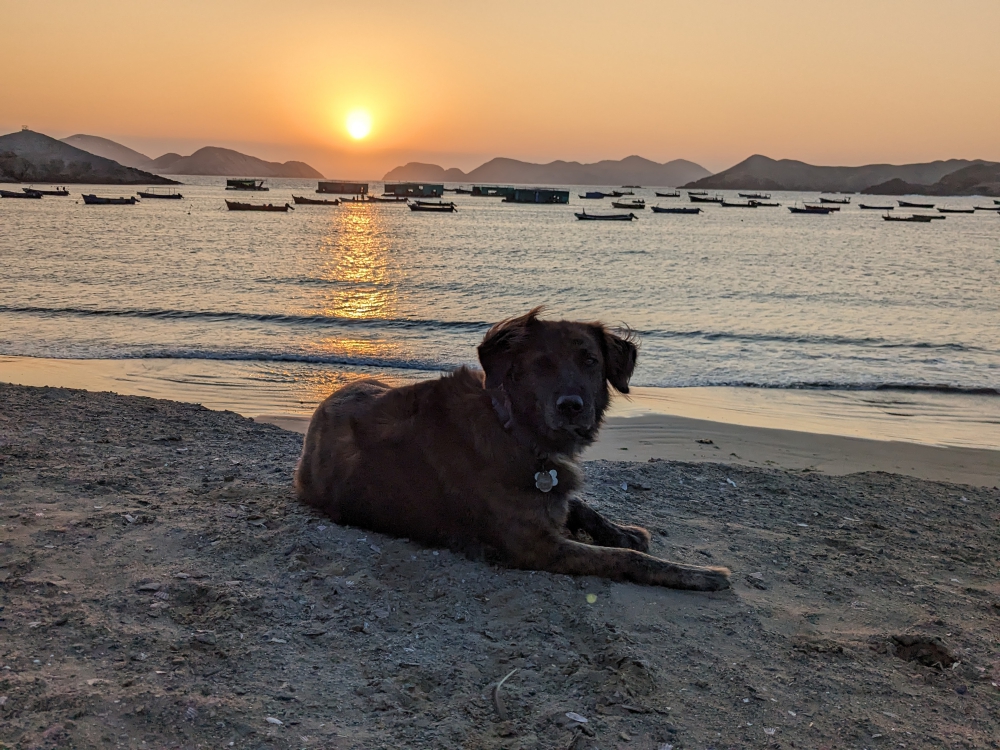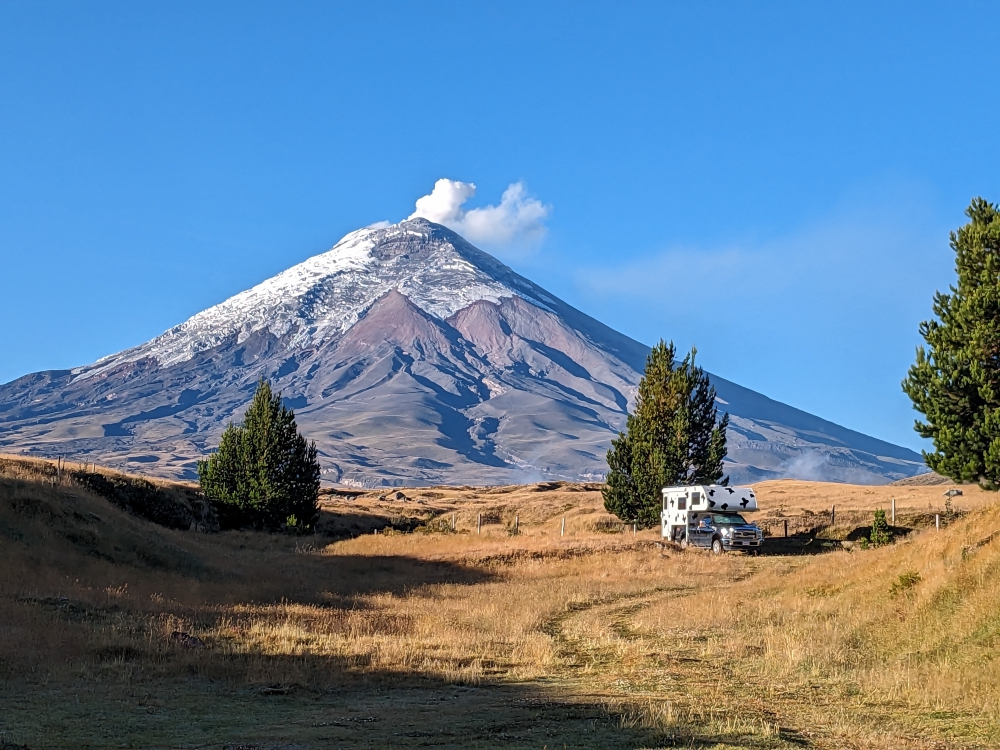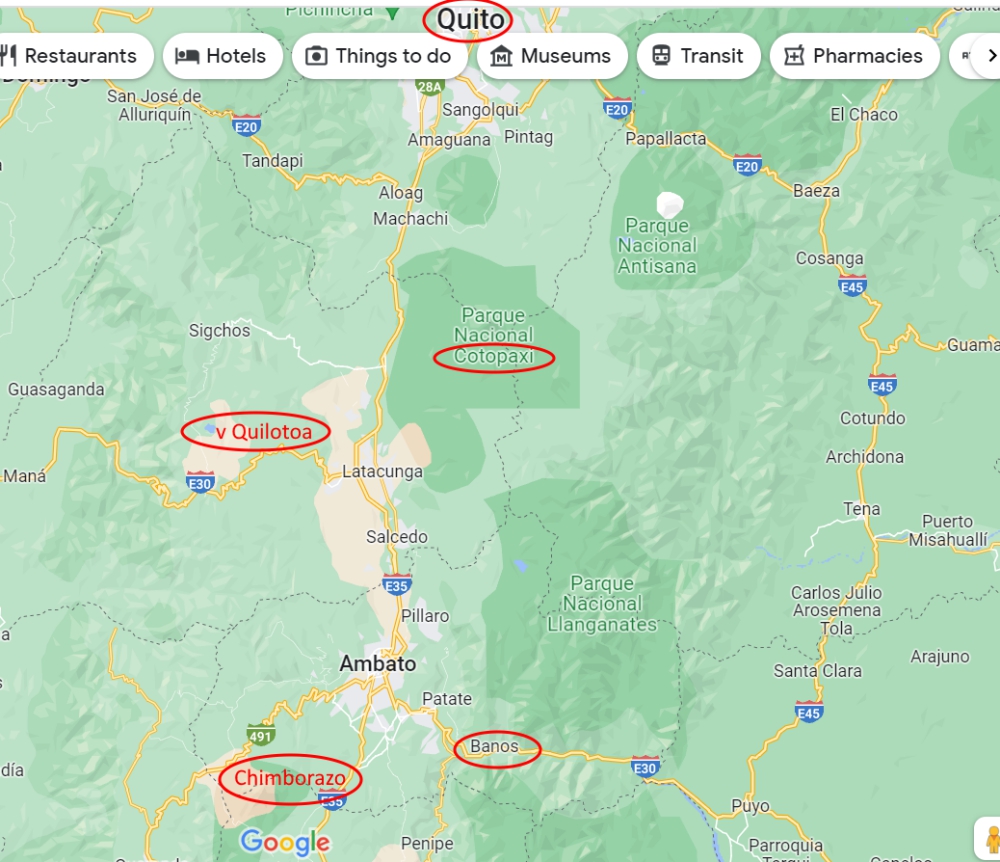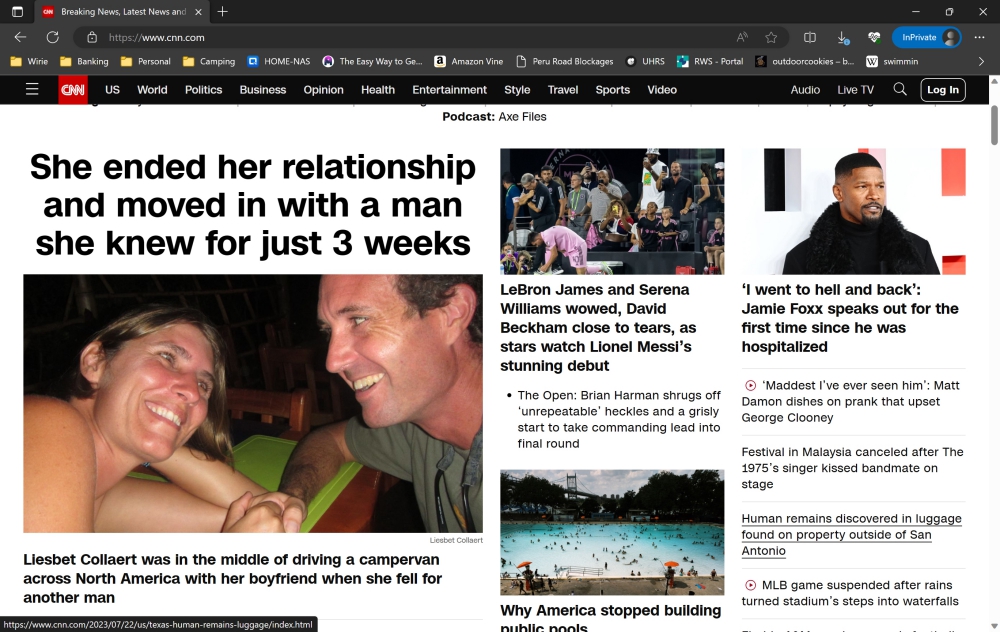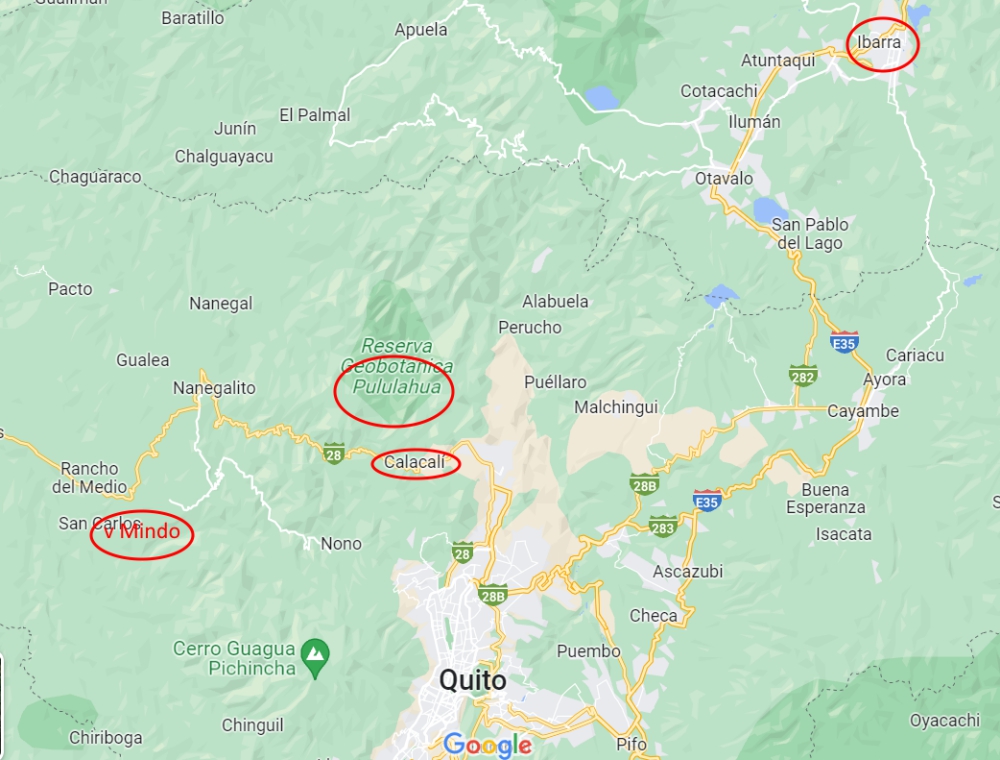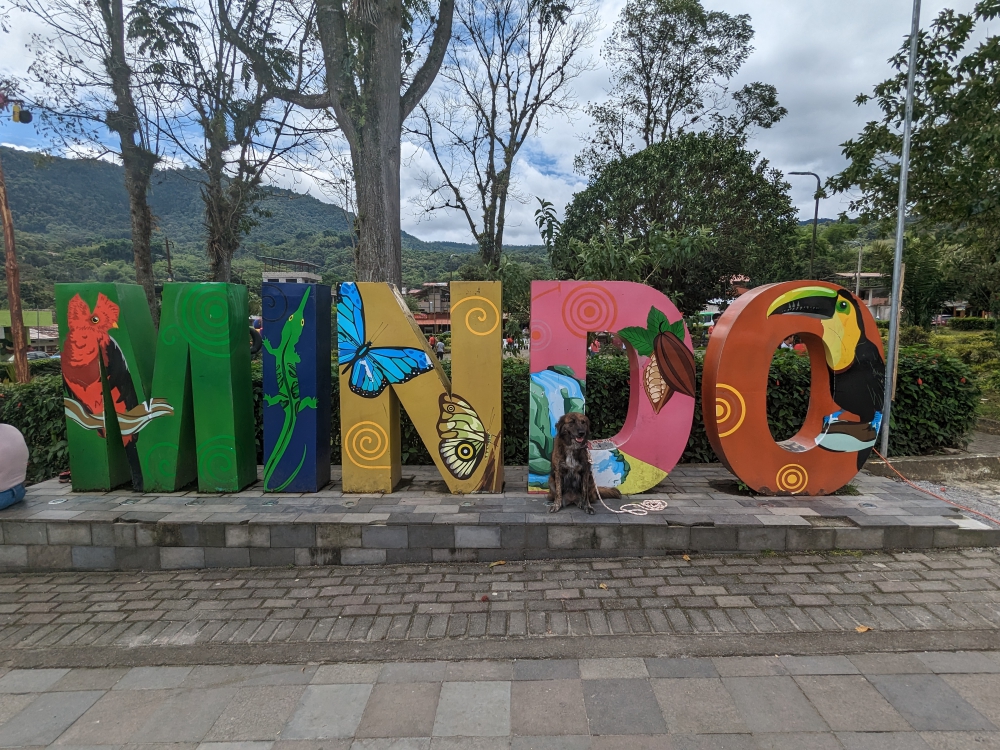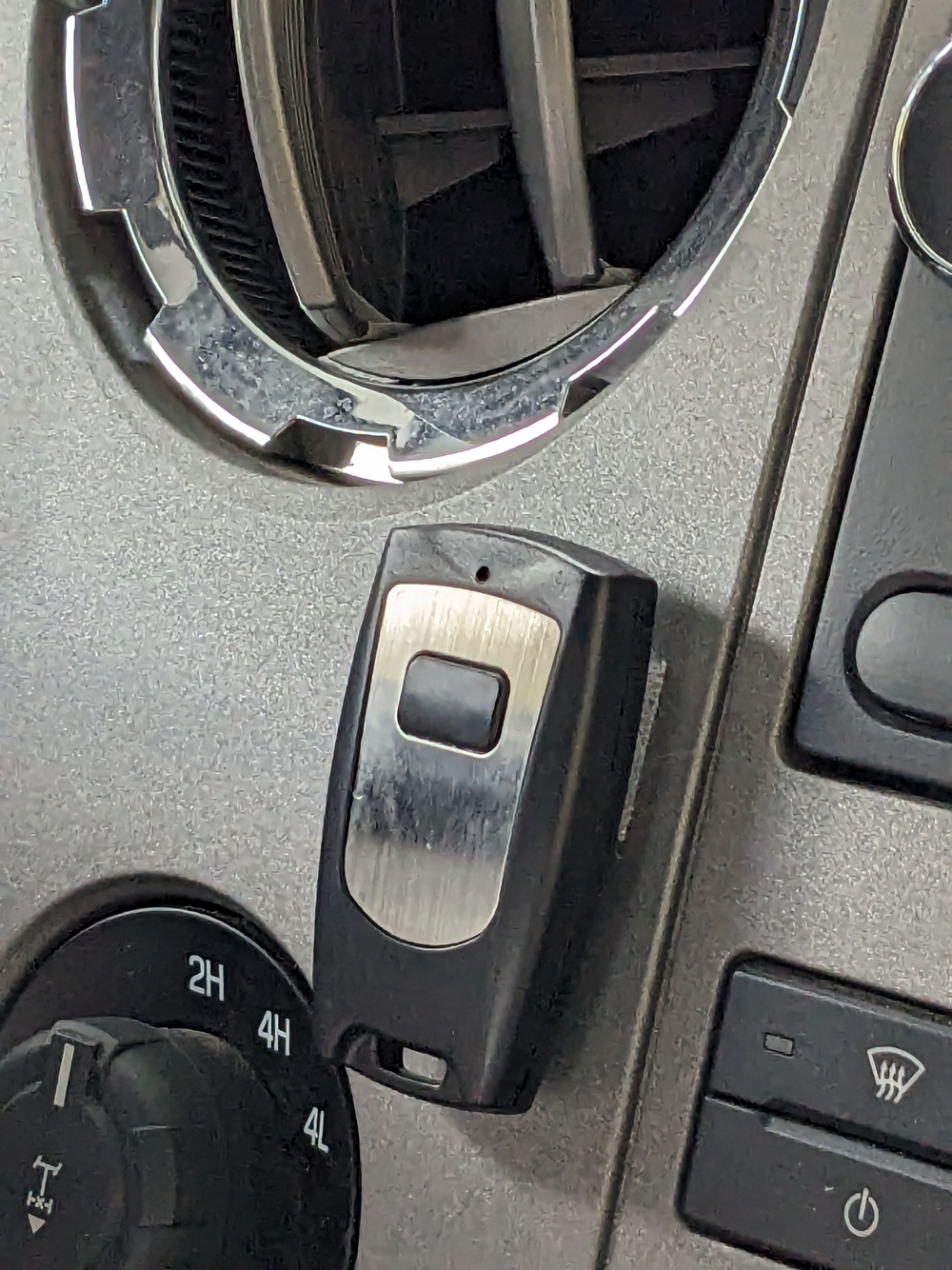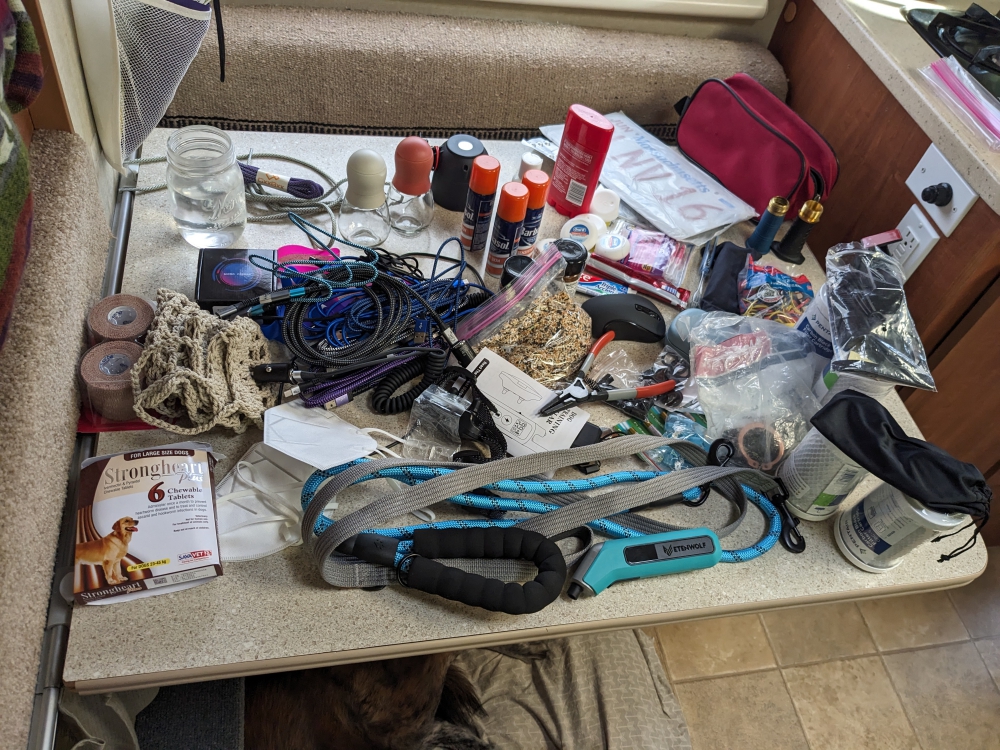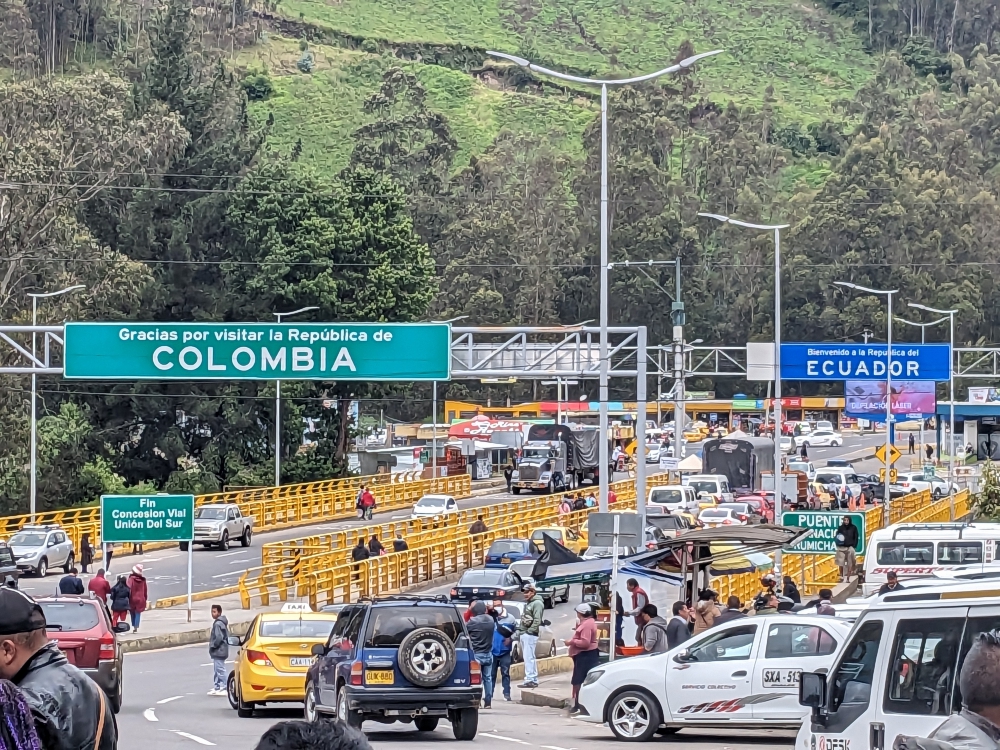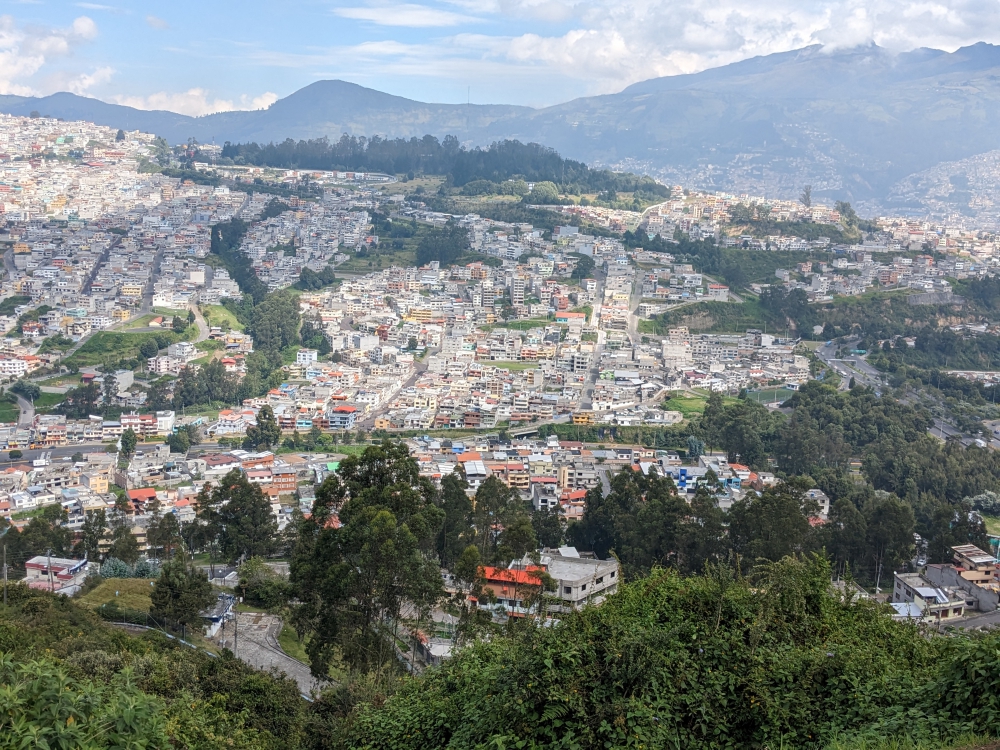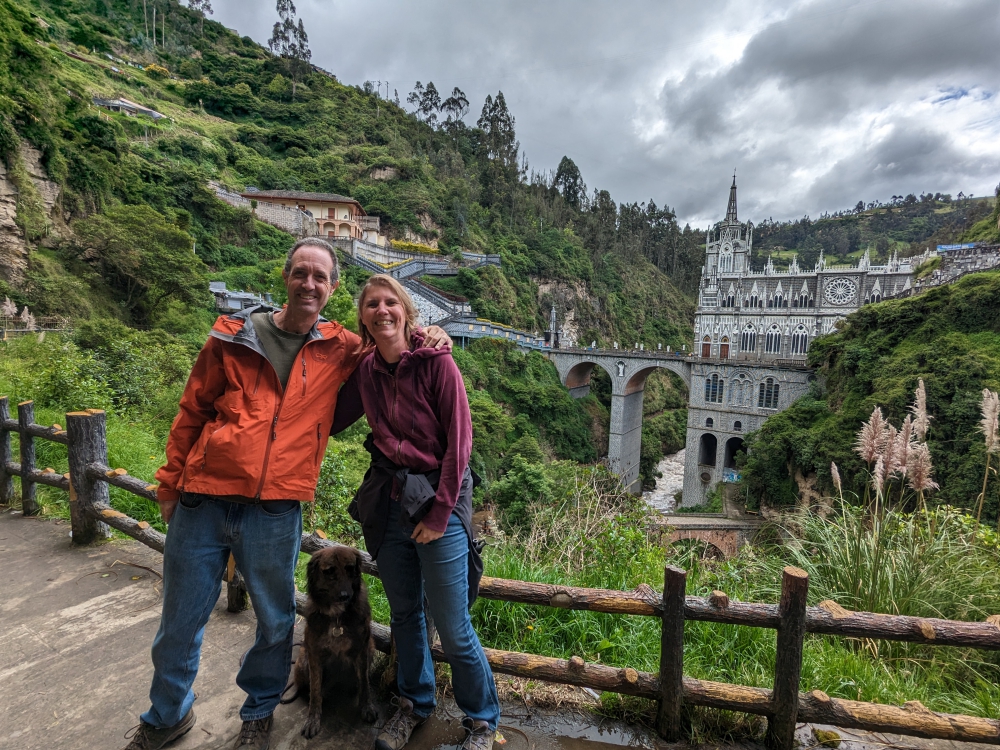
Every month, I post a report of our expenses to show that it is possible to live a comfortable, exciting, and adventurous life without breaking the bank. The less money you spend, the less you need to make. 🙂
This report includes ALL of our expenses, in US$, for two adults and one 60-pound dog (we adopted Maya on June 4th, 2019). Under groceries we incorporate food, produce, and non-alcoholic drinks predominantly bought in supermarkets. Toiletries belong in that category as well. Dining out means eating at a restaurant/event or purchasing take-out food. The health category covers non-prescription medicines and vitamins/supplements; medical contains prescription drugs and doctor’s visits. Because of our income level, Mark and I are eligible for free health care within the state of Massachusetts. For check-ups and extensive care, we return to the US East Coast. Other health issues are resolved locally and out of pocket where needed and possible.
In August 2023, Mark, dog Maya, and I explored the Northern half of Peru in our truck camper, Thirsty Bella.
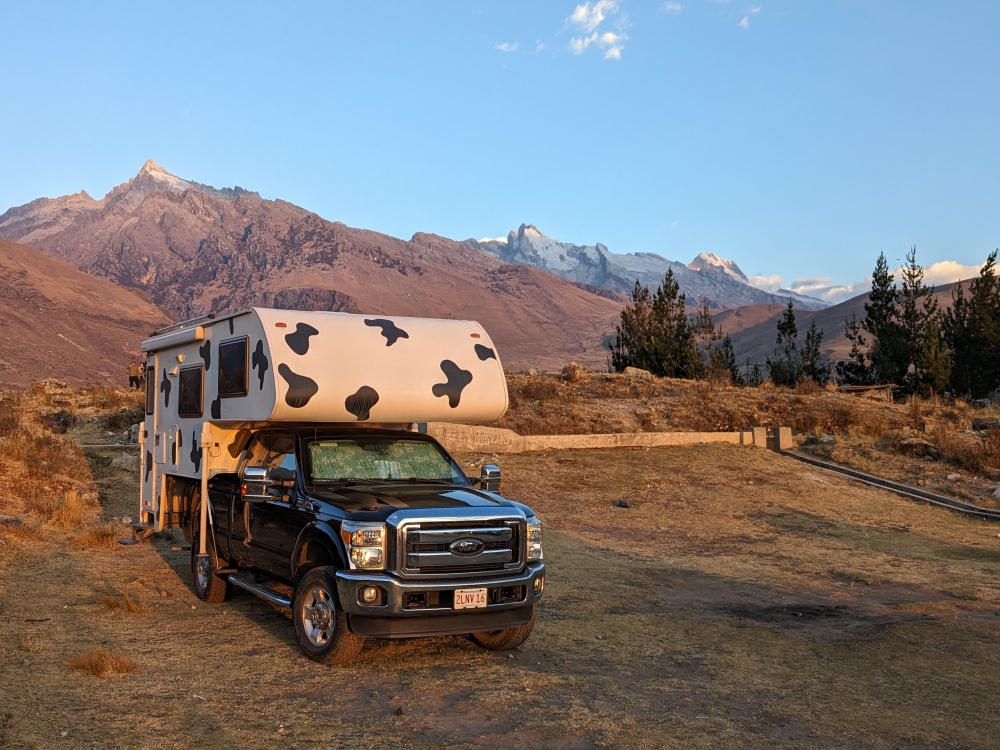
The golden light near Laguna Churup
Note: Traveling overland in this country with your own vehicle is VERY different from flying in as a tourist, using organized transport, visiting the highlights, eating in high-end restaurants, and sleeping in comfortable hotels.
We literally taste Peru with all our senses, from smelling the smoke from a neighbor burning trash and the black exhaust of trucks, to hearing barking dogs, partying locals, honking cars, homemade fireworks, and the killing of pigs, to seeing trash being tossed in rivers, the sea, or the roadside, to tasting the bland food at local stands and limited vegetables in remote villages, to touching the hungry, skinny, attention-deprived stray dogs huddling around our camper, to being stared at by sustainable farmers and squeezed by aggressive drivers. Being part of Peruvian life has been challenging and heart-breaking, but some of the scenery has been awe-inspiring.
(As always, hover over or click on photos in galleries to read their captions.)

Two cute and hungry stray puppies at El Brujo

Driving among trash along the coast

A common sight along the Pan-American Highway in Peru

Take care of the environment, don’t throw trash…

The Cordillera Blanca

Impressive peaks from our free campsite in Caraz
It is no surprise that our biggest spending category last month was the car, more precisely fuel. At about US$5 per gallon for gasoline, this has been “killing” us. Over half of our total monthly amount went to gas! On top of the high prices for this commodity, our fuel mileage has been worse than ever, due to all the mountain driving (up and down relentlessly; no tunnels), the liberal placements of topes (speedbumps) everywhere, and the abundance of potholes. There is a lot of accelerating and slowing to a crawl.

Time to fuel up again

Many speedbumps (and potholes) to slow us down and make us use even more fuel

First fill up in Peru – over US$140!!!

High fuel prices – gasoline is over US$5 per gallon
Thirsty got a bath for the equivalent of US$3 and we paid for a few toll roads as well. Unlike in Colombia, these highways in Peru are actually smooth, wide, fast, and awesome. As long as you don’t look to the sides.

Filthy Thirsty needed a bath after driving on all the dirt roads surrounding Huaraz

Toll rates on the highways: around US$3 for a normal car
Despite grocery items being more expensive in Peru than Colombia and Ecuador, we didn’t spend a huge amount in supermarkets, for two reasons: we are being frugal about what we buy and we rarely see decent stores. They only exist in bigger cities.

Our first decent grocery store in two weeks, in Cajamarca. Yay!

Full cupboards again…

Annoying local dairy store to buy butter from the source – no prices and no friendly service, but affordable and good butter

Bakery in Carhuaz
We mostly obtain produce and eggs at local markets (when present) and don’t eat very varied these days. We have to be creative, just like when we sailed in the remote islands of the South Pacific. Obtaining raw, hanging meat at those mercados is something we are not keen on, so our protein intake has been low.

Lots of fruit at the markets and at roadside stands

Vegetables like at this stand are harder to find and don’t keep long

Dogs are happy at the mercado central

Hanging chickens at the market of Huaraz

Trying to eat varied and healthy at home
Because of the high cost of fuel in August, we refrained from too many splurges. We ate out a few times, but none of that was noteworthy. People keep saying that the food in Peru is excellent. So far, we have not experienced this. If you have traveled here, please enlighten us.

The small, local restaurant where we had a decent and affordable lunch

This ceviche was tasty – it’s the first course of a day menu

Main course of the day menu in a tiny fishing village. The US$3 meal also comes with a juice.

Mark’s meal in Trujillo: beef hearts and gizzards on sticks
One day, not having bread for a sandwich lunch at home, we decided to eat a local meal on our daytrip to a fabulous lake in the Andes Mountains. When asking what was served, the answer was chicharron (pig skins). No chicken? No, but they could make potatoes and eggs for us. Sure! We were only slightly surprised to each receive a bowl with four boiled potatoes in the skin and one, unpeeled hard-boiled egg on top. Never mind that the menu poster showed two boiled eggs (peeled) per plate!

Poster on the outside wall of the food shack

Cooking on wood fires

Our bland lunch
Here is the best part of being in Peru: the scenery and sights! When we can reach and afford them, anyway. 😊 Fascinating ruins, incredible views, rewarding hikes, spectacular lakes. We did a bit of all that, which will be elaborated on in future posts.

Upper part of the Gocta Waterfall

Ventanilla de Otuzco

Cao Viejo ruins

The amazing wall art in Huacas del Sol y la Luna

View along the incredibly crappy road to Llaca Lake

Laguna Llaca at 14,000ft

Willkawain Ruins

Laguna Paron
After keeping an eye out for an alpaca poncho in Colombia and Ecuador, but never biting the bullet, I did treat myself to a colorful poncho at the artisanal market in Huaraz. It wasn’t cheap, but I love it and have used it since on those chilly nights in the mountains.

Showing off my poncho in the Cordillera Blanca

Watching the rising of the full moon in Caraz – with my comfy poncho
Finding usable internet to work has been tricky in Peru. And we have moved camp a lot for that reason. Only some towns have reliable cell service, the biggest plan you can buy is only for 1.5GB, and while Claro states Facebook, WhatsApp, Messenger, and other social media channels are included in the plan, it is our experience that this is not correct. Sometimes, we’d have full bars of 4G service and not one page loads in our browser. One moment, we can connect, the next, nothing…

Getting a Movistar SIM card in Chachapoyas

Mark hard at work at night, often the only time to focus on computer stuff

First time we used our pump to transfer water from a 5-gallon water jug into our tank – we were totally out of potable water
We have been able to stay stick to our $30 average budget for internet, but it has been due to careful consideration and planning around accessibility and the few times we bought an unlimited day plan. That’s when I upload photos to my website and read other people’s blog posts. And for anyone who wonders… yes, we are seriously considering buying Starlink. Ouch! For the first time in a year, we paid for potable water as well.

Recommended chocolate shop in Celendin

Pretty and tasty bonbons!

Carhuaz is famous for its local ice cream

Trying three different and new flavors

We stopped for a sandwich lunch in Carhuaz and I splurged with ice cream for dessert!
Our alcohol expense wasn’t too bad. We stayed at high altitudes for most of August and when dehydration, headaches, and shortness of breath threaten, an adult beverage is not appealing.

Sunset at our wild camping spot near Pueblo de los Muertos

Urban camping in Chachapoyas

Camped for a night at the cold, windy, and rainy Calla Calla Pass

Camped for a night in the countryside

Promising free campsite in Puerto Malabrigo

Sunset along the coast in El Brujo

Urban camping in Trujillo

Tortugas: not a bad place to spend a few days

We spent a few nights along the long, narrow, dirt road to Laguna Paron in Caraz
Most of our campsites were wild and free, but we did stay at a paid campground for three nights; something we usually don’t indulge in. The reason was two-fold: we wanted to take the camper off the truck, because that was the only way to visit most sights around Huaraz in the Cordillera Blanca and we needed to fill with potable water. Finally meeting other campers was a bonus. Most of our fellow overlanders stay at places like this.
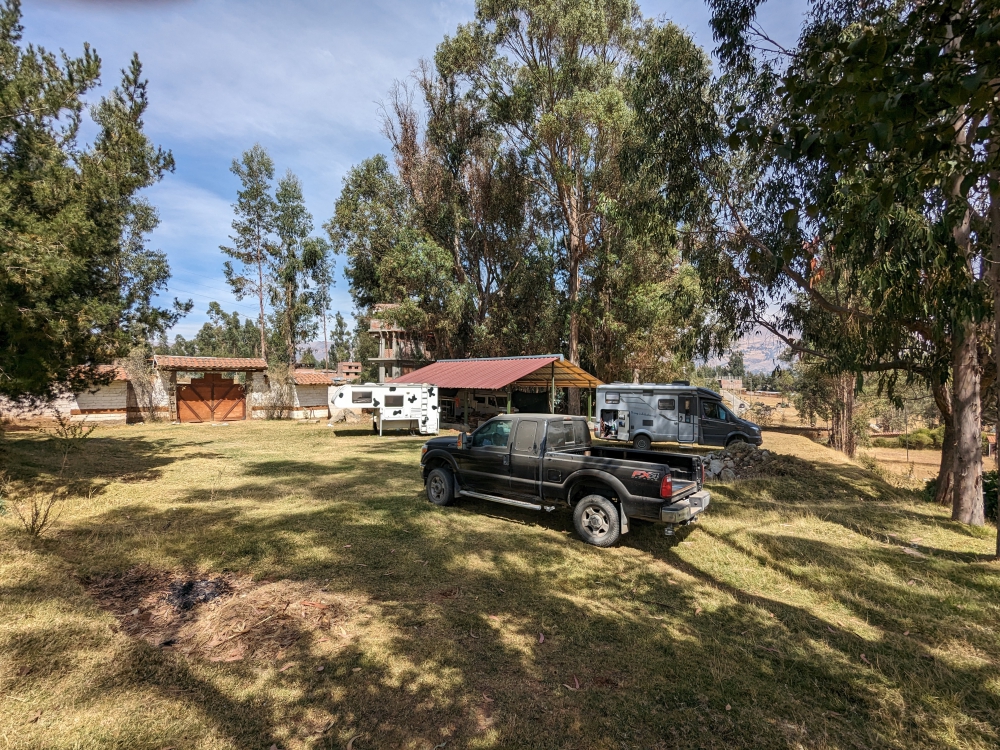
Our paid campground – Marian Wahi – in Huaraz
Unfortunately, Marian Wasi didn’t have WiFi and the Claro cell service was not strong enough to work, so we had to leave the camping earlier than expected. Not that this was an easy feat… We cleared the lowish entrance gate when arriving, but not when leaving. Letting air out of the rear tires was the solution. Good we have an air compressor with us!

A very tight fit leaving the campground

Too close for comfort! Our camper did not clear the gate upon exiting.

Thirsty Bella stuck under the gate – Mark drove, I stood on the ladder to check the minuscule clearance and guide him,, two guys hung at the back to add weight, and we deflated the rear tires

Spending an hour alongside the narrow road to inflate the tires again with our small compressor
The last three expense categories consisted of a few loads of laundry in Trujillo, buying an orange squeezer and new cheese grater, and drinking fresh juices at a café on the coast and coca tea at a high-elevation refugio to help with altitude sickness.

Restaurant/store where we had our juices

Refreshing and fresh orange juice on a hot walk along the coast

Our laundromat in Trijullo
Based on how we kept spending money on all of this in August, we expected our total to be higher than the $1,058 recorded, so we don’t feel too bad about just cresting $1,000. September, however, will sport some super costly items, which will bring us closer to $2,000!
(As always, click on or hover over photos in galleries to read their captions.)
